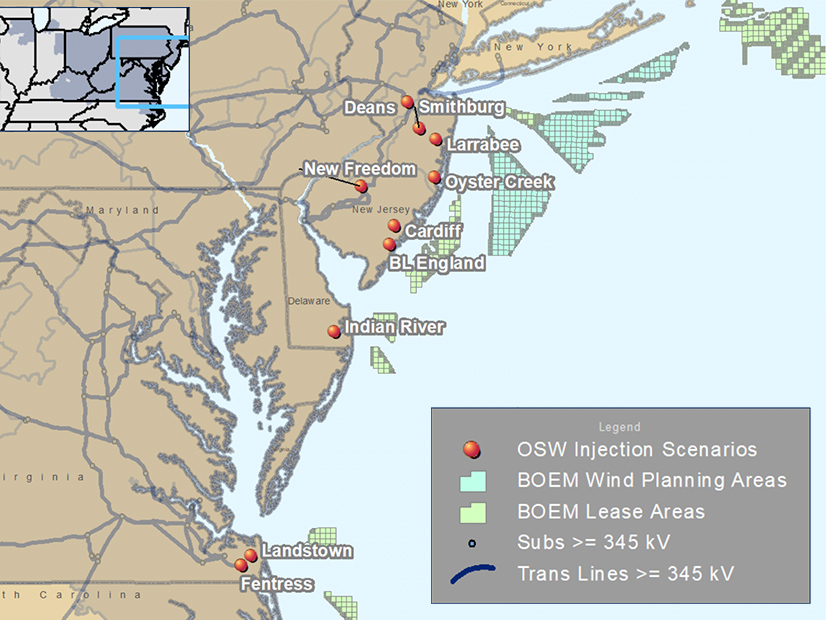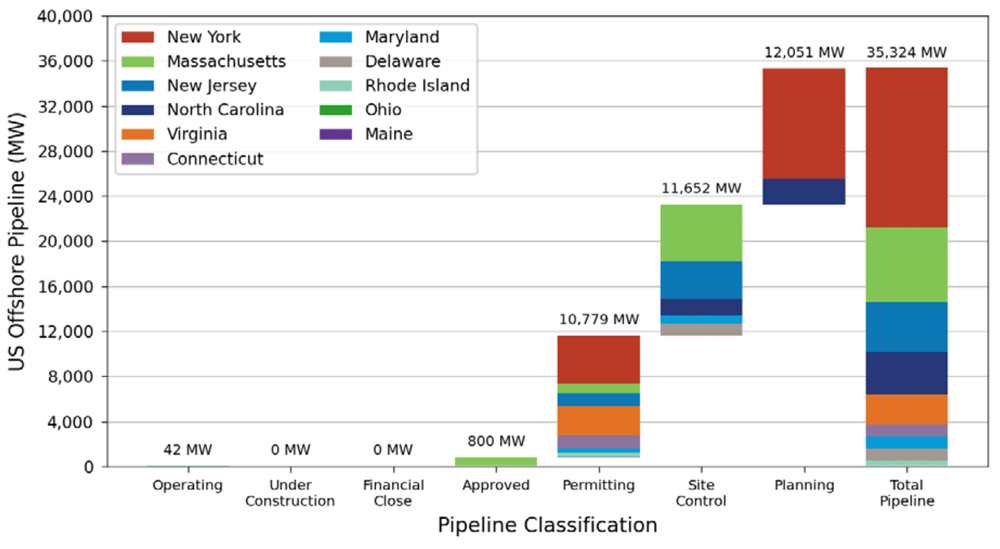
A group of environmentalists and clean energy industry proponents have asked RTOs in the Northeast to conduct an interregional offshore wind transmission study for two distinct regions off the East Coast.
The Clean Energy Advocates presented their proposal at the joint NYISO/PJM/ISO-NE Interregional Planning Stakeholder Advisory Committee (IPSAC) meeting late last month, pushing the need for a study that examines the costs and benefits of an interregional HVDC transmission network for New York and New Jersey, as well as for the line of offshore wind projects running from Massachusetts to North Carolina.
“States are very focused on meeting their internal state goals, and regions are focused on their regions, which is fine, but it doesn’t seem like anyone is talking about this mythical transmission grid … and how all this would work,” Cullen Howe of the Natural Resources Defense Council, part of the group, told RTO Insider.
The group also includes the Sustainable FERC Project, Americans for a Clean Energy Grid, American Clean Power Association, Sierra Club, Advanced Energy Economy, Union of Concerned Scientists and New York Offshore Wind Alliance.
“No one has really kicked the tires on this, so we felt like [IPSAC] was the place that could do it,” Howe said.
Shell Offshore Wind also made a presentation from a developer’s perspective, saying that that the lack of planning is really hindering it, Howe said.
“Timing is a key consideration given that states will proceed with clean energy initiatives before FERC resolves issues in its” Advance Notice of Proposed Rulemaking, Shell said. (See Transmission Industry Hoping for Landmark Order(s) out of FERC ANOPR.)
The Joint ISO/RTO Planning Committee and IPSAC, through the Northeastern ISO/RTO Planning Coordination Protocol, are positioned to provide policymakers with analyses and information in the near term on benefits that may be obtained with enhanced interregional coordination, Shell said.
Federal Backing
Because of the way that interregional projects work generally, it’s hard to get regions to agree on any solution, Howe said.
“Effectively all regions — in this case three regions — would have to agree not just that an interregional solution is the way to go, but exactly what that interregional solution would be, and that often doesn’t happen,” Howe said. “So one of the reasons you don’t see a lot of interregional projects is because … [the parties] often can’t come to an agreement on what a particular solution might look like.”

The group has a powerful ally in Amanda Lefton, director of the Bureau of Ocean Energy Management. Speaking at a conference in New York last month, Lefton said a planned approach to offshore transmission is going to be critical, and “something that’s been incredibly clear is that we need a strong collaborative effort between states and the federal government.” (See “Powering NYC with Renewables,” New York Writing Ending to Tale of Two Grids.)
The U.S. Department of Energy last month released a report on the gaps that will need to be filled to build enough transmission to interconnect electricity from turbines in the Atlantic to power grids along the East Coast. (See DOE: Atlantic Coast Needs Integrated Transmission Planning for OSW.) The DOE report cited a lack of comprehensive evaluation across all the necessary aspects of transmission planning to support offshore wind energy development at scale.
“Current reactive processes that evaluate individual offshore wind projects may not optimize benefits to support deployment of 30 GW by 2030 and beyond. As a result, comprehensive interregional studies of possible offshore wind transmission options are needed,” the report said.
If RTOs/ISOs are worried about who will pay for the analysis, there is a provision in the Build Back Better bill, passed by the U.S. House of Representatives on Friday, to allocate $100 million for offshore wind planning.
“To do this study right now seems to be a no-brainer because it does seem like you could identify a lot of efficiencies by looking at how [this could] be built out in a way that takes into account limited interconnection points on land, what’s the best way that we can do this, and thinking beyond just one state at a time or even one region at a time,” Howe said.
At some point in the next 20 to 30 years, the U.S. will have a lot of offshore wind projects out in the ocean and operating, he said, so it seems like planners would want to say right now what is the most efficient way to build the needed transmission grid.
The next IPSAC meeting is scheduled for Dec. 4.


